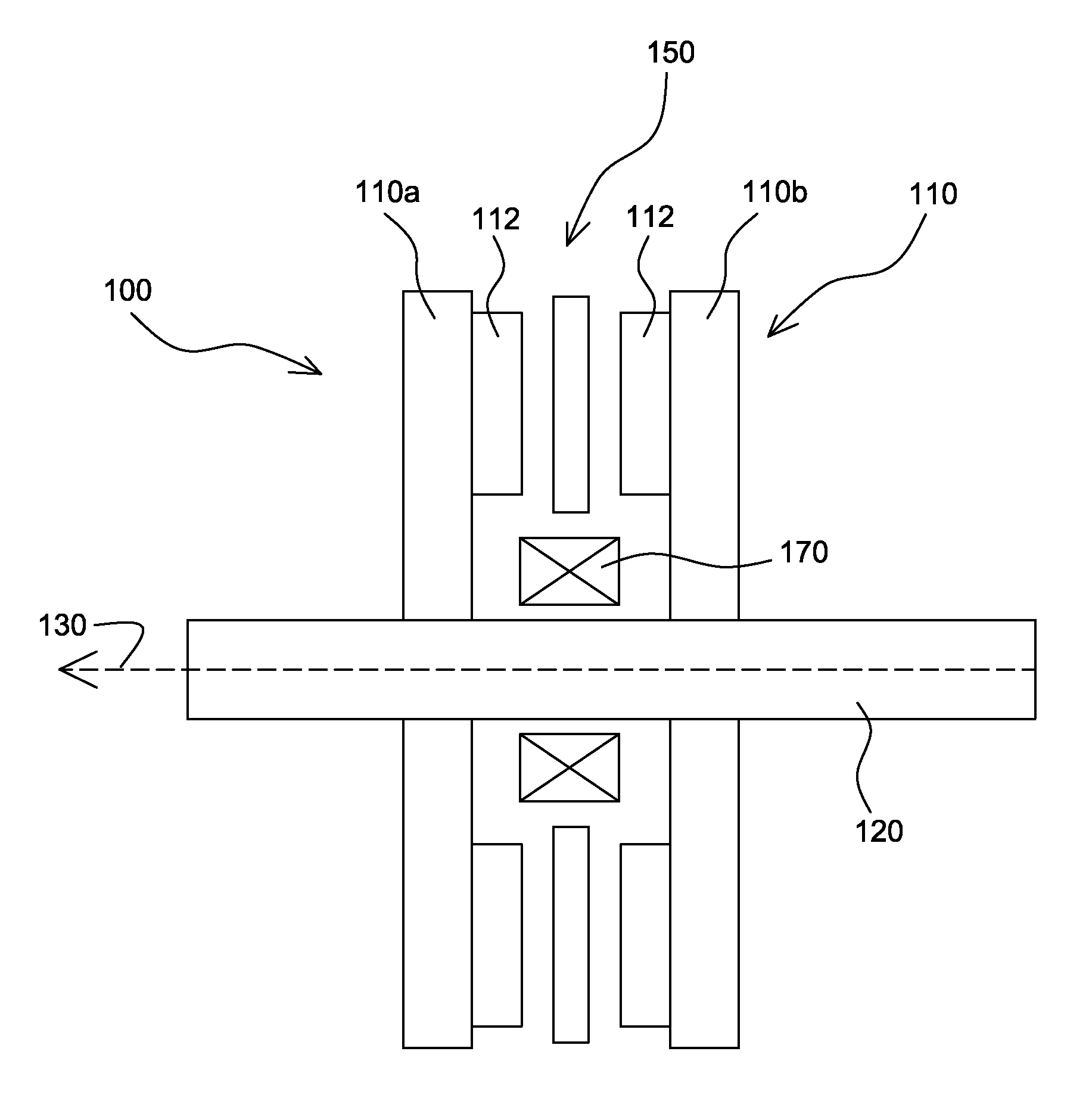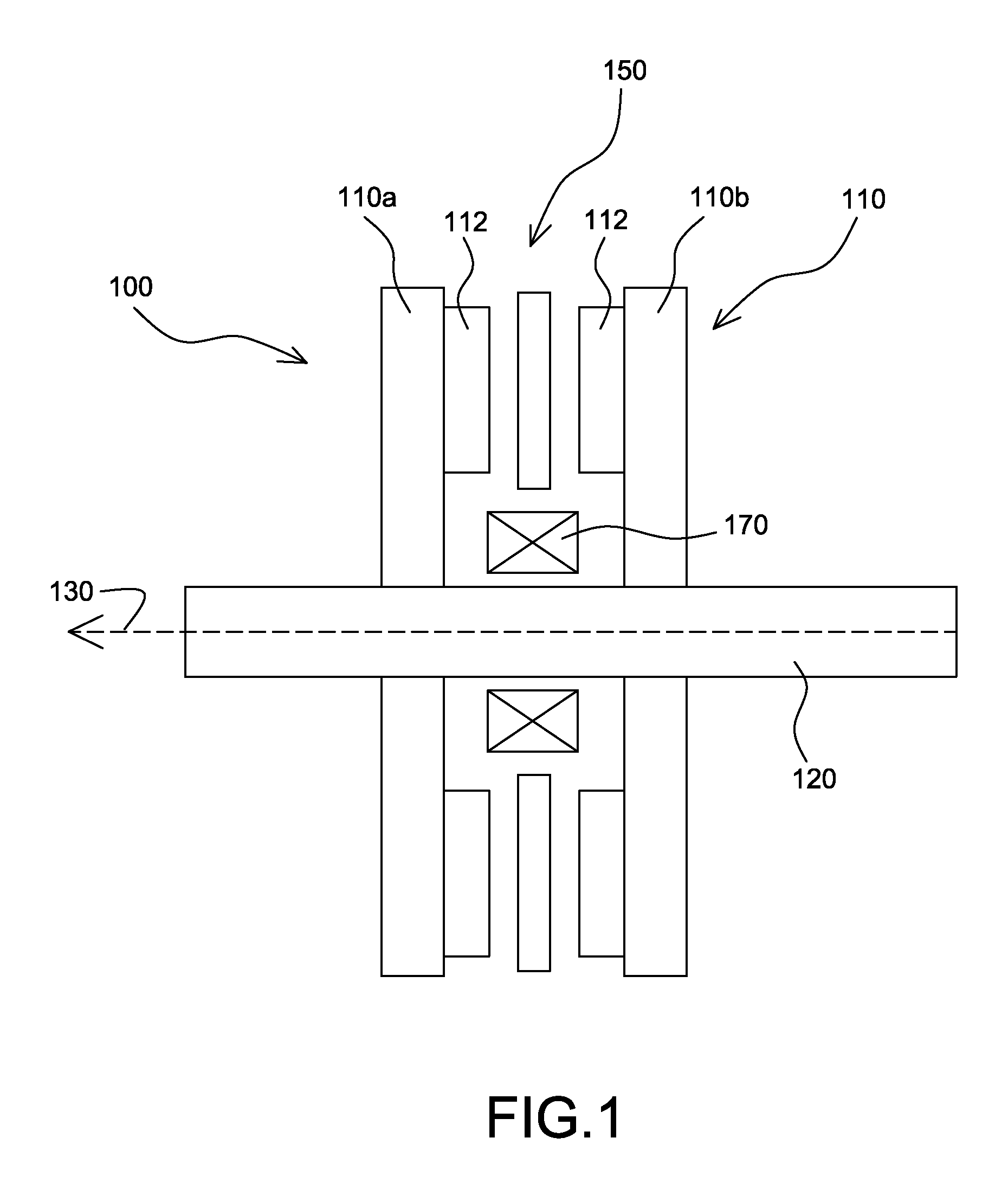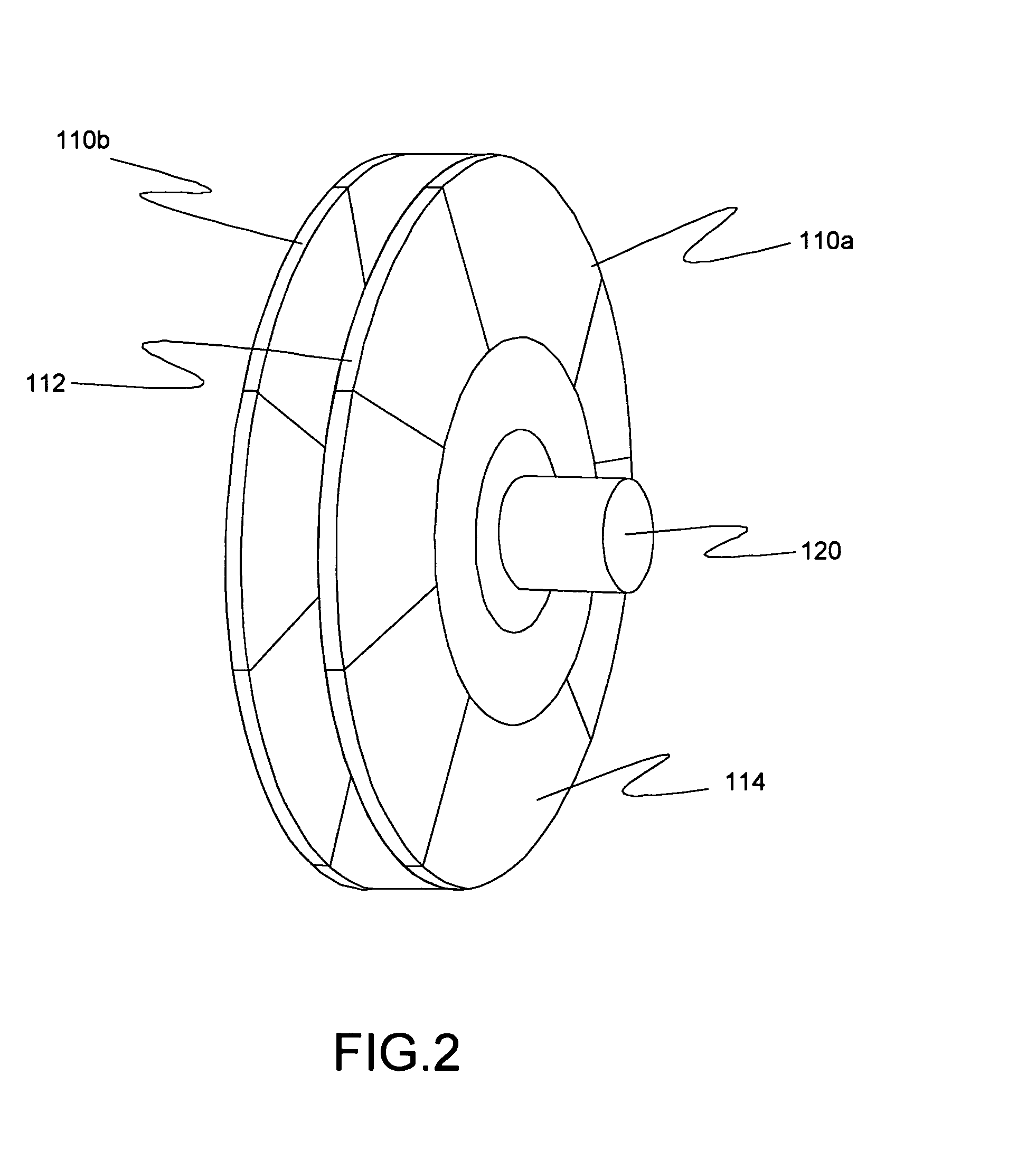Superconducting rotating machines with stationary field coils
a superconducting coil and rotating machine technology, applied in the direction of windings, magnetic circuit rotating parts, magnetic circuit shapes/forms/construction, etc., can solve the problems of increasing the complexity of the overall system design, adding the superconducting field coil to substantial thermal stresses, centrifugal stresses, etc., to achieve the effect of increasing the torque density, improving reliability, and improving performance characteristics
- Summary
- Abstract
- Description
- Claims
- Application Information
AI Technical Summary
Problems solved by technology
Method used
Image
Examples
Embodiment Construction
[0021]FIG. 1 is a cross-sectional view of an exemplary embodiment of an electrical machine 100. The machine 100 may operate as a motor and / or as a generator as desired. As shown, the machine 100 includes a shaft 120 adapted to rotate about a longitudinal axis 130 of the shaft. For the exemplary embodiment shown in FIG. 1, the shaft 120 is formed of a magnetic material. For particular embodiments, the magnetic material employed in the shaft 120 is characterized by a high saturation magnetization, for example above 1.7 Tesla, more particularly above 1.8 Tesla and still more particularly about 2.3 Tesla. Example magnetic materials for the shaft include, but are not limited to, iron-cobalt alloys. As used herein, iron-cobalt alloys may include other constituents, for example to strengthen the alloy. The invention is not limited to a specific shaft construction, and non-limiting examples of the shaft include monolithic constructions and dual or multi-alloy constructions. As discussed bel...
PUM
 Login to View More
Login to View More Abstract
Description
Claims
Application Information
 Login to View More
Login to View More - R&D
- Intellectual Property
- Life Sciences
- Materials
- Tech Scout
- Unparalleled Data Quality
- Higher Quality Content
- 60% Fewer Hallucinations
Browse by: Latest US Patents, China's latest patents, Technical Efficacy Thesaurus, Application Domain, Technology Topic, Popular Technical Reports.
© 2025 PatSnap. All rights reserved.Legal|Privacy policy|Modern Slavery Act Transparency Statement|Sitemap|About US| Contact US: help@patsnap.com



